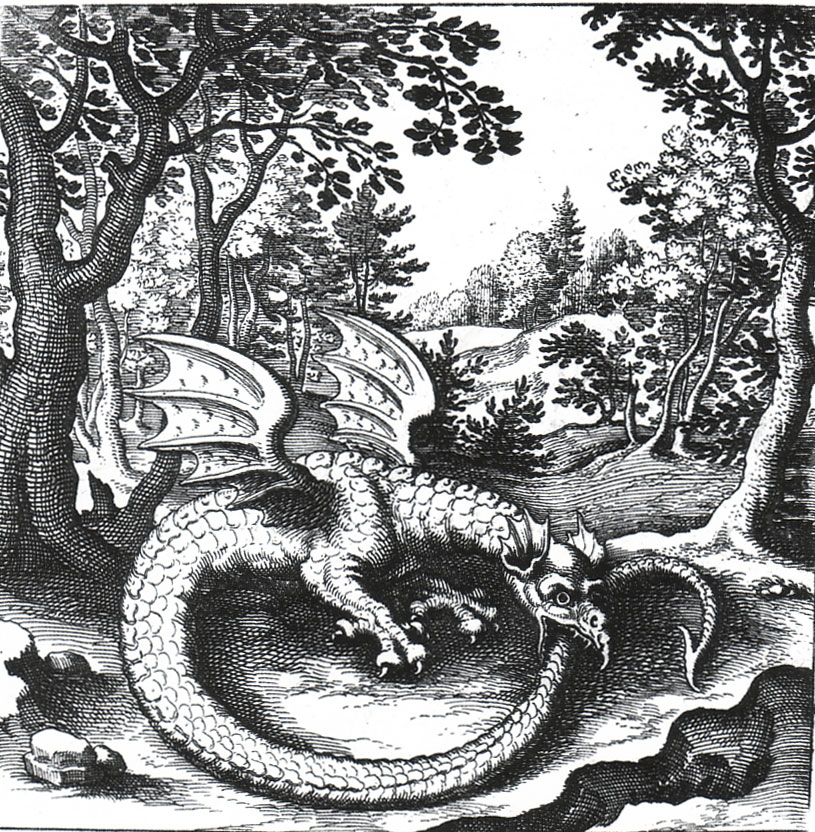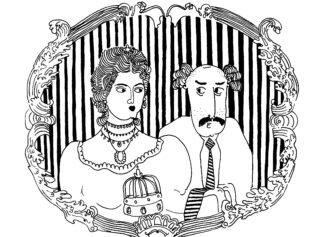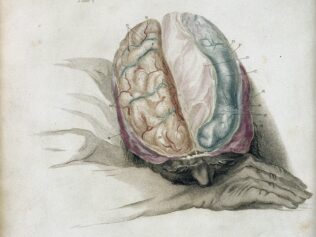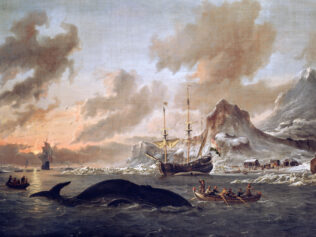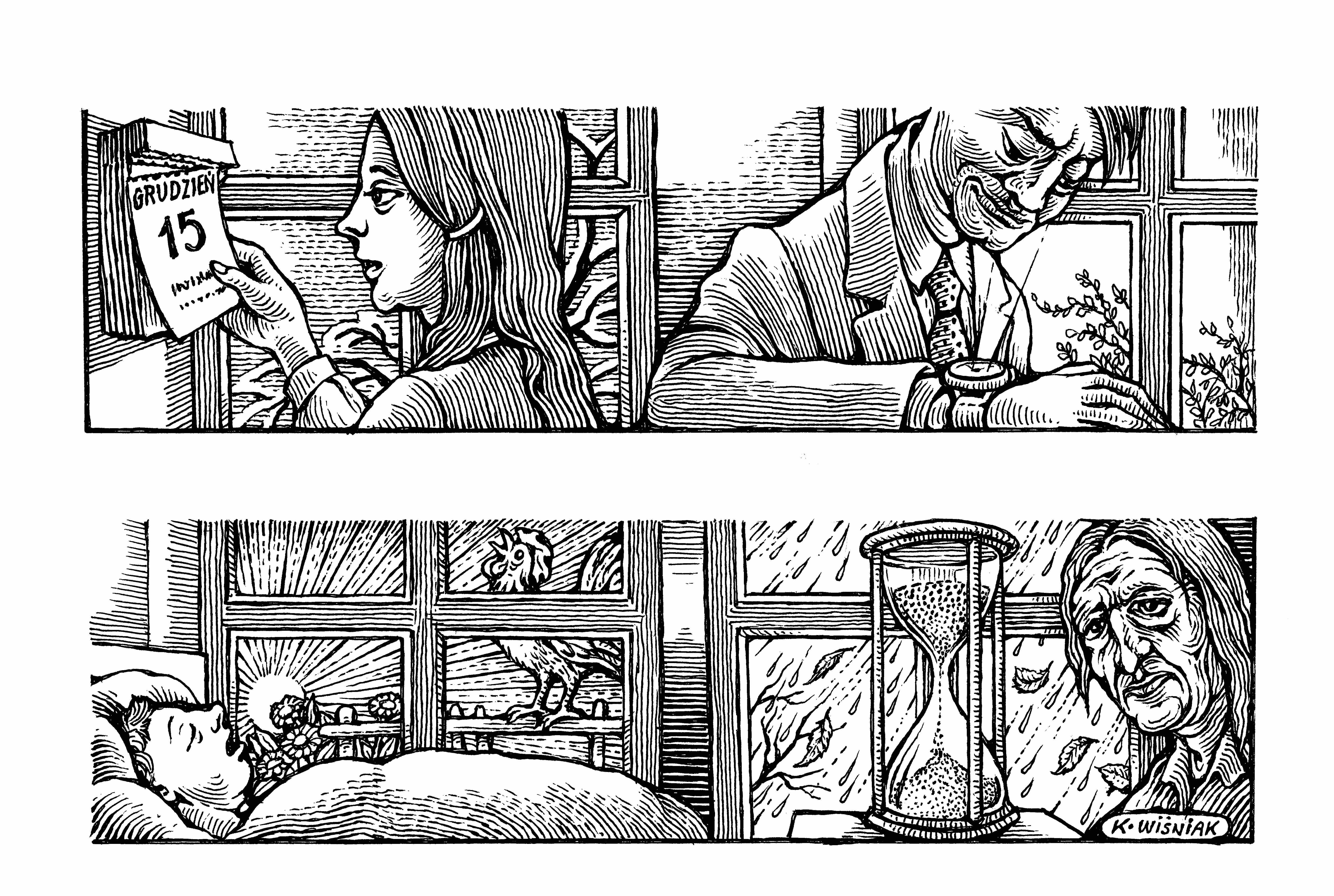
The ouroboros, a serpent devouring its own tail, has slithered into modernity all the way from ancient Egypt. For thousands of years, it separated this world from the underworld, and made sure that the gods remained eternally young. More recently, it can be most frequently encountered in the form of a tattoo.
The symbol of a serpent with its tail in its mouth is one of the most unusual images accompanying mankind for thousands of years. Its official name is the ouroboros – derived from the Greek oura (‘tail’) and bora (‘food’). In the most general terms, it symbolizes cyclical renewal, an eternal return, a closed cycle. The history of the ouroboros is a fascinating tale, with so many diverse, intertwined threads that it is difficult to present it in whole. Individual elements of the story are like scales arranged in rows along the length of a snake’s body. So let us embark upon a journey along some of this cosmic monster’s scales, starting from the end, or the ‘tail’, which is nevertheless gripped in the serpent’s mouth and therefore also marks the beginning.
Modern pop culture
First aired on 7th February 1997, the 13th episode of the fourth season of The X-Files, a cult series for the turn-of-the-century generation, has the telling title “Never Again”. It portrays Agent Dana Scully going through an existential crisis. As she herself puts it, she has the feeling that her life has lost its meaning; she is spinning her wheels, trapped in a vicious circle. She engages in a brief romantic relationship with Ed, a man she meets by chance in a tattoo parlour. Influenced by Ed, Scully gets an ouroboros tattoo on her lower back. However, she does not know Ed’s secrets. Hit hard by his divorce, while under the influence of alcohol he once got a tattoo of Bettie Page (a famous pin-up girl from the 1950s) along with the words ‘never again’. He can now hear the voice of the tattoo in his head, encouraging him to do horrible things. He has already killed a neighbour and burned her body in a furnace in his basement. The same voice is now telling him to kill Scully, but Ed manages to overpower Bettie’s orders at the last moment and burns the destructive tattoo in fire. It later turns out that the red ink used to make the tattoo contained the hallucinogenic substance, ergot.
The key to understanding this episode is a comment made by Ed: “Everyone gets the tattoo they deserve.” That is why Scully chooses the image of an ouroboros. It helps the agent overcome her crisis and get back to work, feeling that her life is back on track and that she is again in control of everything. This happens under the influence of the tattoo, which has given her earthly life a new meaning. Also, it is clear that Ed’s ‘never again’ is the opposite of Scully’s ouroboros, which symbolizes a cyclical return. It would be hard to find a more obvious invocation of the symbol of a serpent devouring its own tail in today’s mass culture.
The serpent as a chemical symbol
In 1866, the German chemist Friedrich August Kekulé (1829–1896) discovered the ring-like chemical structure of benzene. He admitted that the idea had come to him while he was daydreaming. When he was dozing in his chair at the fireplace, he saw atoms dancing in the air, creating a chain in the form of a serpent that grabbed its own tail in its mouth and then began spinning around. The scientist woke up and spent the rest of the night refining his hypothesis. He created a schematic representation of benzene that was reminiscent of the shape of the ouroboros. The incident was merely a funny anecdote until it aroused the interest of the prominent Swiss psychologist Carl Gustav Jung (1875–1961), the father of depth psychology and a researcher of the unconscious, who frantically gathered information about cases of such revelatory illumination.
In Jung’s opinion, what Kekulé and many other great discoverers experienced was a sudden revelation rooted in the unconscious. However, this does not mean that some acquired-yet-forgotten knowledge suddenly rises to the surface. According to the Swiss psychologist, the unconscious mind can explore the world and draw its own conclusions, much like our consciousness. Some stimulus may then cause the result of those explorations to reach the conscious. This often happens when we are asleep, hence the suggestion that we should take breaks for short naps during intellectual creative work. In this way, we turn off our consciousness and give the unconscious a chance to do its work, which over time can spark off an inspiring idea. It comes in a symbolic form, which in Kekulé’s case was the ouroboros.
Early modern and medieval alchemy
The British Library in London holds a certain 18th-century Arab alchemy manuscript. One of the pages shows an ouroboros covered with strange symbols. Inside the circle formed by the serpent’s body, there is a golden globe that has the features of a human face. On this globe, there are three birds (green, white, and red) moving counter-clockwise. The image depicts the alchemical process of producing gold (the philosopher’s stone) from a synthesis of three elements: sulphur, mercury and salt, here depicted as three colourful birds. In alchemy, sulphur is a male, fiery and active (creative) component that symbolizes the sun and the mind (God). Mercury is a female, wet and receptive (passive) component that symbolizes the moon and the spirit. In turn, salt is a dry and bodily component – a symbol of the matter that forms the passive base of everything. The drawing therefore depicts the eternal process of the creation, transformation, breakup, and synthesis of… three components: the mind, spirit and matter. All this happens in a closed circle symbolized by the ouroboros.
Another alchemical manuscript from the 14th century depicts a similar idea enriched with new, considerably more universal content. It again shows an ouroboros. Its upper part, from the mouth to the middle of its body, is dark; whereas its lower part, all the way to the tail, is light and covered with stars. Inside, there is the Greek inscription hen to pan (‘the All is One’). On the one hand, this depiction highlights the unity of all of the elements of the physical world. On the other, it shows clearly the idea of time – the dark part of the serpent is the earth; the starry part is the sky. As time goes by, the earthly material component literally devours the heavenly spiritual component. The world becomes increasingly material and devoid of the life-giving spirit. It collapses under its own weight. However, this doom is just the beginning of a new cycle symbolized by a serpent devouring its own tail. The all is one.
Ancient Rome
The collections of the Vatican Museums include a large marble block. About 3.5 x 2.5 metres in size, it is the base of a column that no longer exists. It was erected in AD 161 in Rome in the Field of Mars, near the site of the funeral pyre of Emperor Antoninus Pius, whose reign fell within the period of the Golden Age of the Roman Empire. The main wall of the base is embellished with a relief, whose central part shows the apotheosis of the emperor and his wife Faustina, as they are carried to heaven by the winged and nude Aion, a deity that personifies eternity. He holds a globe circled by images of Zodiac signs, symbolizing the universe. A snake twines around the globe, but the animal does not hold its tail in its mouth. Such a depiction of the ouroboros shows the propaganda message that the souls of the adored emperor and his wife are leaving the physical world and will live among the immortals, receiving divine honours. That is because the snake marks the border between the world of humans and the heaven of the gods. It no longer holds its tail in its mouth; the gates to the world beyond are now open.
Ancient magic
The collections of the British Museum, in turn, include a Greek magical papyrus written between the 3rd and the beginning of the 5th century that nonetheless contains much earlier inscriptions. One of them contains instructions for making an amulet (called a phylactery), which, as we read, will guard the holder against daemons, phantasms, sickness and suffering. It should be inscribed on a strip of gold, silver or tin (or written on a specially prepared papyrus), and the inscribed words should be the names of the Great God: KMEPIS CHPHYRIS IAEÔ IAÔ AEÊ IAÔ ÔÔ AIÔN IAEÔBAPHRENE MOUNOTHILARIKRIPHIAE Y EAIPHIRKIRALITHONYOMENERPHABÔEAI.
Then, one should inscribe mysterious symbols called seals, the incantation ‘protect my body and my soul’, along with the name of the holder. All of this should be located inside an ouroboros with a dark back and fair underbelly drawn next to the text. It must then be sanctified in a relevant rite. The holder must carry the amulet on him at all times.
A similar magical papyrus, now kept in Oslo, contains the following instructions for making an amulet guarding against any evil spells that may harm a man: “Take a piece of lead and inscribe on it the unique figure, holding a torch in its right hand, a knife on its right and on its left, on its head three falcons, under its legs a scarab, and under the scarab an ouroboros serpent.” In this case, the serpent is one of the symbols accompanying the image of the strange figure intended to protect the holder against all dangerous spells. Its ‘weapons’ consist of such symbolic elements as torches, knives, falcons, scarabs, and… an ouroboros serpent. This is not the only situation in which the serpent is ascribed the role of a saviour.
Serpent-worshippers
In the colourful world of various religions in the early days of the Greek Empire, there was a somewhat eccentric and rather small sect called the Ophites (from Greek ophis, meaning ‘serpent’). Its members were active in the 2nd and 3rd century (chiefly in Alexandria and Egypt) and they drew heavily on Jewish traditions in their religious images. However, the beliefs of the Ophites were the reverse of the biblical traditions. The serpent was good, and God as the creator was evil. In their interpretation, the world and the first people were created by an evil demiurge identified with the Bible’s Jehovah. He wanted to hide the truth from men, whom he had enslaved and made reliant on him. That is why he forbade Adam to eat the fruit of knowledge of good and evil. But the good serpent persuaded Eve to eat the forbidden fruit and give some to Adam. In this way, men were given the gift of knowledge and a chance to free themselves form the control of the malevolent creator. Based on what we know, it seems that members of the sect used complicated drawings in their rituals that showed the picture of a geocentric world with a road from the Earth through the seven spheres of the cosmos to the ouroboros snake, which encircled the world and represented the gates to paradise. The Ophites also identified the serpent with the biblical Leviathan.
Maybe the religious practices of the Ophites should be linked to an extraordinary monument in the form of a mysterious alabaster bowl. Inside the bowl, there are engraved images of sixteen naked men and women, standing in a circle and greeting a winged serpent whose mouth is directed towards its tail. The animal is surrounded by a circle of solar rays beaming out of its body. Christian authors described a ritual of the Ophites during which they would bring a chest with a snake from a cave. Then they would let the snake out on a table on which they had put pieces of bread. The snake crawled on the table, and the followers took the pieces touched by the animal, ate them, and kissed the snake on the mouth. At the end, they sang a hymn in honour of the true God, who was high in heaven.
Egypt under the pharaohs
According to the Egyptians, the world emerged from a primordial ocean called the Nun. That was when everything appeared – even the gods, who had not existed before. According to some theological speculations, the father of the gods (known by various names, including Atum) existed in some form in the primordial waters of chaos. That deity created the gods and people. But the creation of the world did not mean the disappearance of primordial chaos or the abyss. It existed not only externally to the world, but also permeated it here and there. Consequently, the concept of the border between the world and existence, and chaos and non-existence was crucially important for the Egyptians. This created room for the presence of a great cosmic serpent. It was initially referred to as Mehen, meaning ‘the coiled one’. The name ‘the one eating its own tail’ (the equivalent of the Greek word ouroboros) was adopted later. The serpent coils around the world and forms the border between being and non-being. Since it touches upon the eternal primordial ocean on the one hand and upon the ageing world on the other, its body has miraculous regenerative properties. From time to time (maybe even every night), the great gods, who aged just like everything else in the universe (though at a much slower rate than humans), left the world and entered the snake to become rejuvenated. Consequently, the Egyptian ouroboros protects the world from the waters of chaos that surround it and rejuvenates all creatures. Its regenerative role was inspired by observations of snakes shedding their skin.
The oldest known ouroboros images reflect these ideas very clearly. The second shrine at the burial place of the sarcophagus containing the mummy of Tutankhamun (a pharaoh who ruled in Egypt in the 14th century BC) bears the image of Ra-Osiris, which combines the features of the sun-god and the lord of the underworld. There are as many as two snakes devouring their own tails on the same figure: one around the deity’s head, the other around its feet. This means first of all that heaven and the underworld are two opposite ends of the world, and second that the snakes protect the deity and cause its rebirth – both the Ra, who rises every morning, and Osiris, who is reborn in the underworld. Finally, the depiction expresses the concept of the Ra-Osiris god as the absolute One; the beginning and the end. In turn, a papyrus from the 11th century BC that belonged to Priestess Herytuben shows the solar Ra as a child in a circle formed by the body of an ouroboros serpent. The sun-god has just been born in the morning, regenerated in the body of the cosmic serpent that he entered in the evening as an old man.
Curved spacetime
This brings us to the end of our story, which of course also marks the very beginning of the idea of a serpent eating its own tail. In this particular form, it was born in ancient Egypt. After that, drawing on other Mediterranean cultures, it permeated the Greek and Roman civilization, and later the medieval and modern speculations all the way to today’s mass culture, ultimately ending up just slightly above Agent Scully’s derrière. The oldest images and concepts related to the ouroboros are surprisingly entwined with the most recent discoveries. Erik Hornung, a prominent Egyptologist and researcher of Egyptian religion, stresses that a serpent coiling around the world is a perfect epitome of the modern theory of curved spacetime. The ouroboros anticipates this hypothesis. Jung would have found this to his liking. People have finally discovered what their unconscious minds have been expressing for centuries, in the form of the cosmic serpent-without-end.
Translated from the Polish by Daniel J. Sax


